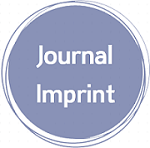Knowledge, Attitude, and Practices towards COVID-19 during the Rapid Rise Period: A Cross-Sectional Survey among Public University Students of Bangladesh
Downloads
Bangladesh has experienced long term COVID-19 impact in the education sector where university students have suffered a lot. This cross-sectional study intended to evaluate the health behavior of public university students towards the COVID-19. The convenience sampling technique was employed during the rapid COVID-19 period. A total of 952 public university students participated in the KAP survey. Statistical analyses were performed depending on the data type. Study population demonstrated exemplary COVID-19 knowledge along with positive attitudes and preventive practices towards the COVID-19. Gender, university year, and major were determined as associating factors with their overall KAP. Female students reported better knowledge and practice regarding COVID-19 than their counterpart male students. Students living in the capital Dhaka city did not show positive attitudes towards COVID-19 compared to the students living outside the city. Students who were without their families demonstrated better attitudes compared to the students with their families. Broadcast media, print media, the internet, university, and social media were identified as sources of COVID-19 precautionary measures information for these students. Students showed better knowledge and attitude levels when used print media and university respectively compared to the students who used surrounding people as a source of information. This study enhances our understanding of the health behavior of public university students of Bangladesh. It has also determined the associating factors with their KAP level. The outcome of this study can assist the government, organizations, and the university to prepare for a comprehensive pandemic control effort.
Doi:10.28991/SciMedJ-2021-0302-4
Full Text:PDF
Downloads
Deng, C.-X. (2020). The global battle against SARS-CoV-2 and COVID-19. International Journal of Biological Sciences, 16(10), 1676–1677. doi:10.7150/ijbs.45587.
Hayat, K., Rosenthal, M., Xu, S., Arshed, M., Li, P., Zhai, P., Desalegn, G. K., & Fang, Y. (2020). View of Pakistani Residents toward Coronavirus Disease (COVID-19) during a Rapid Outbreak: A Rapid Online Survey. International Journal of Environmental Research and Public Health, 17(10), 3347. doi:10.3390/ijerph17103347.
Hua, J., & Shaw, R. (2020). Corona Virus (COVID-19) “Infodemic” and Emerging Issues through a Data Lens: The Case of China. International Journal of Environmental Research and Public Health, 17(7), 2309. doi:10.3390/ijerph17072309.
Zhang, H., & Shaw, R. (2020). Identifying Research Trends and Gaps in the Context of COVID-19. International Journal of Environmental Research and Public Health, 17(10), 3370. doi:10.3390/ijerph17103370.
Zhong, B.-L., Luo, W., Li, H.-M., Zhang, Q.-Q., Liu, X.-G., Li, W.-T., & Li, Y. (2020). Knowledge, attitudes, and practices towards COVID-19 among Chinese residents during the rapid rise period of the COVID-19 outbreak: A quick online cross-sectional survey. International Journal of Biological Sciences, 16(10), 1745–1752. doi:10.7150/ijbs.45221.
COVID-19 Map. (2020). Johns Hopkins Coronavirus Resource Center. Available online: https://coronavirus.jhu.edu/map.html (accessed on 13 November 2020).
Namazi, H., & Kulish, V. V. (2020). Complexity-Based Classification of the Coronavirus Disease (COVID-19). Fractals, 28(5), 2050114-S68. doi:10.1142/S0218348X20501145.
Ozili, P. K., & Arun, T. (2020). Spillover of COVID-19: Impact on the Global Economy (SSRN Scholarly Paper ID 3562570). Social Science Research Network. doi:10.2139/ssrn.3562570.
Zhou, F., Yu, T., Du, R., Fan, G., Liu, Y., Liu, Z., Xiang, J., Wang, Y., Song, B., Gu, X., Guan, L., Wei, Y., Li, H., Wu, X., Xu, J., Tu, S., Zhang, Y., Chen, H., & Cao, B. (2020). Clinical course and risk factors for mortality of adult inpatients with COVID-19 in Wuhan, China: A retrospective cohort study. The Lancet, 395(10229), 1054–1062. doi:10.1016/S0140-6736(20)30566-3.
Rahman, M. M., Khan, S. J., Sakib, M. S., Chakma, S., Procheta, N. F., Mamun, Z. A., Arony, A., Rahman, F., & Rahman, M. M. (2020). Assessing the psychological condition among general people of Bangladesh during COVID-19 pandemic. Journal of Human Behavior in the Social Environment, 1–15. doi:10.1080/10911359.2020.1848688.
Shammi, M., Bodrud-Doza, M., Towfiqul Islam, A. R. M., & Rahman, M. M. (2020). COVID-19 pandemic, socioeconomic crisis and human stress in resource-limited settings: A case from Bangladesh. Heliyon, 6(5), e04063. doi:10.1016/j.heliyon.2020.e04063
Arshad Ali, S., Baloch, M., Ahmed, N., Arshad Ali, A., & Iqbal, A. (2020). The outbreak of Coronavirus Disease 2019 (COVID-19)—An emerging global health threat. Journal of Infection and Public Health, 13(4), 644–646. doi:10.1016/j.jiph.2020.02.033
Lai, C.-C., Wang, C.-Y., Wang, Y.-H., Hsueh, S.-C., Ko, W.-C., & Hsueh, P.-R. (2020). Global epidemiology of coronavirus disease 2019 (COVID-19): Disease incidence, daily cumulative index, mortality, and their association with country healthcare resources and economic status. International Journal of Antimicrobial Agents, 55(4), 105946. doi:10.1016/j.ijantimicag.2020.105946.
Ali, A. (1999). Climate change impacts and adaptation assessment in Bangladesh. Climate Research, 12, 109–116. doi:10.3354/cr012109.
Chanda Shimi, A., Ara Parvin, G., Biswas, C., & Shaw, R. (2010). Impact and adaptation to flood: A focus on water supply, sanitation and health problems of rural community in Bangladesh. Disaster Prevention and Management: An International Journal, 19(3), 298–313. doi:10.1108/09653561011052484.
Mutsuddy, P., Tahmina Jhora, S., Shamsuzzaman, A. K. M., Kaisar, S. M. G., & Khan, M. N. A. (2019). Dengue Situation in Bangladesh: An Epidemiological Shift in terms of Morbidity and Mortality [Research Article]. Canadian Journal of Infectious Diseases and Medical Microbiology; Hindawi. doi:10.1155/2019/3516284
Steckler, M. S., Mondal, D. R., Akhter, S. H., Seeber, L., Feng, L., Gale, J., … Howe, M. (2016). Locked and loading megathrust linked to active subduction beneath the Indo-Burman Ranges. Nature Geoscience, 9(8), 615–618. doi:10.1038/ngeo2760.
Glass, R. I., Becker, S., Huq, M. I., Stoll, B. J., Khan, M. U., Merson, M. H., Lee, J. V., & Black, R. E. (1982). Endemic Cholera in Rural Bangladesh, 1966–1980. American Journal of Epidemiology, 116(6), 959–970. doi:10.1093/oxfordjournals.aje.a113498.
Rahman, M., & Chakraborty, A. (2012). Nipah virus outbreaks in Bangladesh: A deadly infectious disease. WHO South-East Asia Journal of Public Health, 1(2), 208. doi:10.4103/2224-3151.206933.
Mamun, M. A., & Griffiths, M. D. (2020). First COVID-19 suicide case in Bangladesh due to fear of COVID-19 and xenophobia: Possible suicide prevention strategies. Asian Journal of Psychiatry, 51, 102073. doi:10.1016/j.ajp.2020.102073.
COVID-19 General Information. (2020). IEDCR. Available online: https://iedcr.gov.bd/covid-19/covid-19-general-information (accessed on 12 November 2020).
Anwar, S., Nasrullah, M., & Hosen, M. J. (2020). COVID-19 and Bangladesh: Challenges and How to Address Them. Frontiers in Public Health, 8. doi:10.3389/fpubh.2020.00154.
Shammi, M., Bodrud-Doza, Md., Islam, A. R. Md. T., & Rahman, Md. M. (2020). Strategic assessment of COVID-19 pandemic in Bangladesh: Comparative lockdown scenario analysis, public perception, and management for sustainability. Environment, Development and Sustainability. doi:10.1007/s10668-020-00867-y.
Gohel, K. H., Patel, P. B., Shah, P. M., Patel, J. R., Pandit, N., & Raut, A. (2021). Knowledge and perceptions about COVID-19 among the medical and allied health science students in India: An online cross-sectional survey. Clinical Epidemiology and Global Health, 9, 104–109. doi:10.1016/j.cegh.2020.07.008.
Basir, N. A. B. A., Rahman, N. A. A., Haque, M., Basir, N. A. B. A., Rahman, N. A. A., & Haque, M. (2020). Knowledge, Attitude and Practice Regarding Pertussis among a Public University Students in Malaysia. Pesquisa Brasileira Em Odontopediatria e Clínica Integrada, 20. doi:10.1590/pboci.2020.002.
Chen, Y., Fang, L., & Liu, X. W. (2015). Survey of status quo of disaster response knowledge and skills of non-medical college students in Xi’an City. Chinese Nursing Research, 11, 1315–1318.
Gillani, A. H., Mohamed Ibrahim, M. I., Akbar, J., & Fang, Y. (2020). Evaluation of Disaster Medicine Preparedness among Healthcare Profession Students: A Cross-Sectional Study in Pakistan. International Journal of Environmental Research and Public Health, 17(6), 2027. doi:10.3390/ijerph17062027.
Rahman, M. M., Khan, S. J., Sakib, M. S., Halim, M. A., Rahman, M. M., Asikunnaby, & Jhinuk, J. M. (2021). COVID-19 responses among university students of Bangladesh: Assessment of status and individual view toward COVID-19. Journal of Human Behavior in the Social Environment, 1–20. doi:10.1080/10911359.2020.1822978.
Rahman, M. M., Khan, S. J., Sakib, M. S., Halim, M. A., Rahman, F., Rahman, M. M., Jhinuk, J. M., Nabila, N. H., & Yeasmin, M. T. M. (2021). COVID-19 responses among general people of Bangladesh: Status and individual view toward COVID-19 during lockdown period. Cogent Psychology, 8(1), 1860186. doi:10.1080/23311908.2020.1860186.
Cao, W., Fang, Z., Hou, G., Han, M., Xu, X., Dong, J., & Zheng, J. (2020). The psychological impact of the COVID-19 epidemic on college students in China. Psychiatry Research, 287, 112934. doi:10.1016/j.psychres.2020.112934.
Mamun, M. A., Chandrima, R. M., & Griffiths, M. D. (2020). Mother and Son Suicide Pact Due to COVID-19-Related Online Learning Issues in Bangladesh: An Unusual Case Report. International Journal of Mental Health and Addiction. doi:10.1007/s11469-020-00362-5.
Ursachi, G., Horodnic, I. A., & Zait, A. (2015). How Reliable are Measurement Scales? External Factors with Indirect Influence on Reliability Estimators. Procedia Economics and Finance, 20, 679–686. doi:10.1016/S2212-5671(15)00123-9.
RStudio | Open source & professional software for data science teams. Available online: https://rstudio.com/ (accessed on 15 January 2021).
Covid-19: 73% of the deceased in Bangladesh are male. (2020, May 19). The Business Standard. Available online: https://tbsnews.net/coronavirus-chronicle/covid-19-bangladesh/covid-19-73-deceased-bangladesh-are-male-83260 (accessed on 19 May 2020).
Walter, L. A., & McGregor, A. J. (2020). Sex- and Gender-specific Observations and Implications for COVID-19. Western Journal of Emergency Medicine: Integrating Emergency Care with Population Health, 21(3). doi:10.5811/westjem.2020.4.47536.
Akram, A. (2019). Alarming Turn of Dengue Fever in Dhaka City in 2019. Bangladesh Journal of Infectious Diseases, 6(1), 1–2. doi:10.3329/bjid.v6i1.42627.
Chowdhury, P. (2017). Combating Urban Hazard: A Qualitative Study of Disaster Preparedness in Dhaka, Bangladesh. Available online: http://lup.lub.lu.se/student-papers/record/8918581 (accessed on 17 March 2021).
H., & Islam, S. (2015). Awareness and Preparedness of Disasters in Bangladesh-A Study of Dhaka City Dwellers. Social Science Review, The Dhaka University Studies.
Rahman, N., Ansary, M. A., & Islam, I. (2015). GIS based mapping of vulnerability to earthquake and fire hazard in Dhaka city, Bangladesh. International Journal of Disaster Risk Reduction, 13, 291–300. doi:10.1016/j.ijdrr.2015.07.003.
Islam, R., Islam, M. N., & Islam, M. N. (2016). Earthquake risks in Bangladesh: Causes, vulnerability, preparedness and strategies for mitigation. ARPN Journal of Earth Sciences (JES), 5(2), 75–90.
Paul, B. K., & Bhuiyan, R. H. (2010). Urban earthquake hazard: Perceived seismic risk and preparedness in Dhaka City, Bangladesh. Disasters, 34(2), 337–359. doi:10.1111/j.1467-7717.2009.01132.x.
Saiful Islam, A. B. M., Jameel, M., Rahman, M. A., & Jumaat, M. Z. (2011). Earthquake time history for Dhaka, Bangladesh as competent seismic record. International Journal of Physical Sciences, 6(16), 3921–3926.
Hoffmann, R., & Muttarak, R. (2017). Learn from the Past, Prepare for the Future: Impacts of Education and Experience on Disaster Preparedness in the Philippines and Thailand. World Development, 96, 32–51. doi:10.1016/j.worlddev.2017.02.016.
Tan, Yibing, Xiaolan Liao, Haihao Su, Chun Li, Jiagen Xiang, and Zhaoyang Dong. “Disaster Preparedness among University Students in Guangzhou, China: Assessment of Status and Demand for Disaster Education.” Disaster Medicine and Public Health Preparedness 11, no. 3 (September 26, 2016): 310–317. doi:10.1017/dmp.2016.124.
Bao, H., Cao, B., Xiong, Y., & Tang, W. (2020). Digital Media’s Role in the COVID-19 Pandemic. JMIR MHealth and UHealth, 8(9), e20156. doi:10.2196/20156.
Goel, A., & Gupta, L. (2020). Social Media in the Times of COVID-19. JCR: Journal of Clinical Rheumatology, 26(6), 220–223. doi:10.1097/rhu.0000000000001508.
Karasneh, R., Al-Azzam, S., Muflih, S., Soudah, O., Hawamdeh, S., & Khader, Y. (2021). Media's effect on shaping knowledge, awareness risk perceptions and communication practices of pandemic COVID-19 among pharmacists. Research in Social and Administrative Pharmacy, 17(1), 1897-1902. doi:10.1016/j.sapharm.2020.04.027.
- This work (including HTML and PDF Files) is licensed under a Creative Commons Attribution 4.0 International License.












